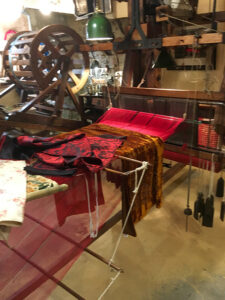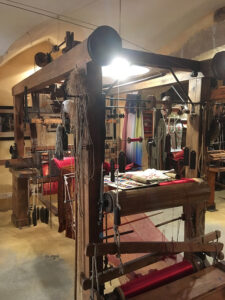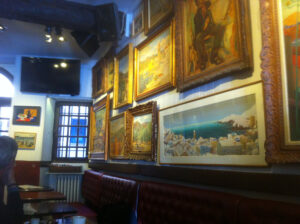Be a Flâneur
By Michele Bazan Reed Email: bazanreed@hotmail.com

I learned a new word the other day — flâneur.
I was browsing the New York Times online and the headline of a story, caught my eye: “The Art of Being a Flâneur.” As the author, Stephanie Rosenbloom, explains, it’s the art of idly strolling, letting your senses be your guide.
When I read it, I found myself remembering my late husband, Bill, and his way of traveling. He would’ve loved that word, flâneur. He just called his method serendipity. And it gave us some of the best adventures of our lives.
I’ve always been a planner, and if we didn’t have an itinerary — preferably written or printed up — I’d get antsy. I pored over tourist books and maps for every destination. I’d make lists of “must sees” — a museum here, a cathedral there, the best restaurant for seafood in a city on our list.
Not so Bill. Whenever we got to a destination, whether it was our first time there or one we’d visited many times, like Barcelona, he couldn’t wait to head out on foot to explore aimlessly.
We’d drop our bags at the hotel and hit the streets within minutes of arriving. He’d take me by the hand and lead me down back streets and into cul-de-sacs to see an interesting piece of architecture or an intriguing shop.
That’s how we chanced upon one of the most fascinating shops we’ve ever visited, down a twisty narrow street in Barcelona.
 In a tiny, dim shop, little bigger than my loft’s living room, we found a treasure trove of paper ephemera — postcards and advertisements, and most interesting to our daughter, Katie, playbills and movie posters from the early days of cinema. We spent an enjoyable hour sifting through boxes stacked hip deep and posters like the Spanish version of “King Kong” and “Frankenstein” plastering every vertical surface, before leaving with a handbill for the original 1951 movie release of “A Streetcar Named Desire.”
In a tiny, dim shop, little bigger than my loft’s living room, we found a treasure trove of paper ephemera — postcards and advertisements, and most interesting to our daughter, Katie, playbills and movie posters from the early days of cinema. We spent an enjoyable hour sifting through boxes stacked hip deep and posters like the Spanish version of “King Kong” and “Frankenstein” plastering every vertical surface, before leaving with a handbill for the original 1951 movie release of “A Streetcar Named Desire.”
Another day we turned a corner in the city’s Gothic Quarter, to find ourselves face to face with four 30-foot columns from the first-century Roman Temple of Augustus. Not a museum, just a space between two medieval buildings on a public street, where children could climb all over the history lesson and we could touch a relic of the Roman occupation of Spain.
We spent many happy days wandering Collioure, France, on foot. On one occasion, looking for a cold beer on a hot day, we visited the Bar des Templiers, named after the Templar knights. In the early years of the 20th century, artists like Matisse, Gauguin and Picasso were frequent visitors to Collioure, drawn by the unique quality of light in the southern French town. But the proverbial starving artist is real and many left paintings to pay their bar bill. So we enjoyed a drink and a museum visit all in one.
We took an organized tour of Poland, with little free time to just explore. But we managed to eke out a couple of hours in Warsaw, which left us with more memories than many of the organized parts of the tour. We wandered the streets, eating fried mini pierogi sold in a paper cone from a walk-up takeout window, until we came upon the Polish War Museum. It was closing time and we couldn’t get into the museum proper, but the guard gave us a half hour to wander the grounds among Polish Army tanks, trucks and planes displayed there to the delight of my history buff hubby.

In Lyon, France, we wandered the Old Quarter for hours, poking our heads into churches, staring into dusty shop windows at the marionette puppets the city is famous for and grabbing bits of food like “silkworkers’ brains,” a savory cheese dip eaten on crusty baguette. Bill spied a colorful display of scarves in a shop window. Inside, we were treated to an impromptu exploration of a vintage silk atelier or workshop, complete with antique looms and silks, led by the owner, a seventh-generation silkmaker.
You don’t have to be a world traveler to employ the art of being a flâneur. Wandering without an agenda in your own hometown can bring surprises and unexpected pleasures.
A stroll through Oswego’s downtown can find you enjoying some homemade chocolates, browsing an independent bookstore and sipping freshly ground coffee with some marvelous baked goods. Ithaca’s Commons, Syracuse’s Armory Square, Manlius village center and Sackett’s Harbor’s main drag are ripe for a leisurely way of exploring.
So the next time you venture out, try ditching the list and the agenda, and enjoy the soul-enriching benefits of being a flâneur.

